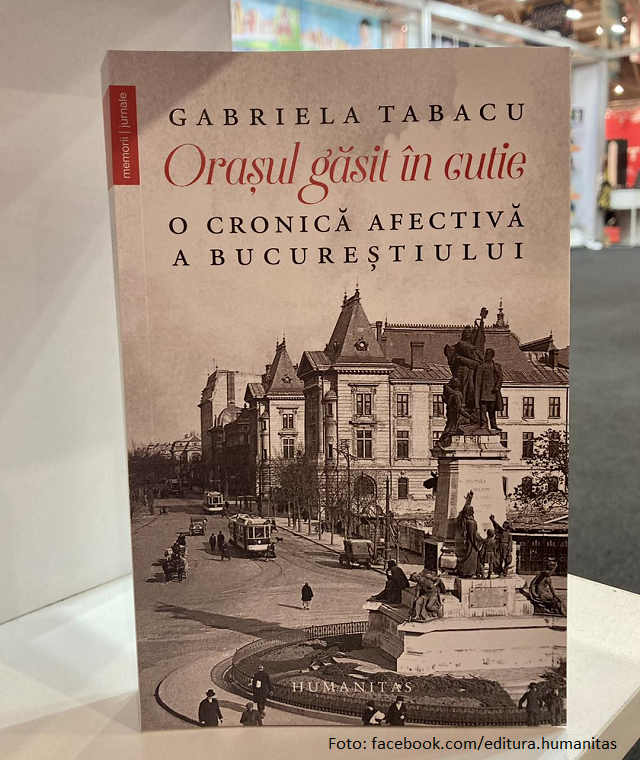Bucharest in a box
Architect Gabriela Tabacu publishes emotional chronicle of Bucharest in the 1960s.

Steliu Lambru, 22.07.2023, 13:00
The history of Bucharest at the end of 1970s and 80s was marked by transformations that left deep traces in the memory of those who witnessed them first-hand. The brutal intervention of Nicolae Ceaușescu and the change to the city as a result of pointless demolitions led to the loss of a large section of old Bucharest. Its true that cities also change naturally in time, so some parts will inevitably be lost, but these gradual changes do not create the kind of social problems like that of the lack of habitation space that resulted from the demolitions carried out during the communist regime. Uranus, once one of the most beautiful parts of the Romanian capital city, is now 90% gone, and is an example of pointless demolition that led to a shortage of habitation space.
The Bucharest that today only exists in photographs and archival documents is an attraction for those who wish to relive the lost past. Images exert a powerful attraction, but words are no less fascinating, as can be seen from a book called “The city found in a box. An emotional chronicle of Bucharest” (Orașul găsit în cutie. O cronică afectivă a Bucureștiului) by the architect Gabriela Tabacu. The book looks back at Bucharest in the 1960s through the eyes of a ten-year-old girl who arrives in the capital city from Oradea, a town in north-western Romania. The writer Tatiana Niculescu commented on the book by Gabriela Tabacu and what she discovered reading it:
“We discover all kinds of places like the swimming pool at the Lido and the shops Polar and Unic, and things like the Parfait ice cream and the profiterole, which you could only find in the fanciest cafes in the centre of the city. I also remember well when I had my first profiterole, it was an event to remember, extraordinary, the joy of my life as a child. Not to mention the green grocers and of course, the transition from the old world, the world this childs parents used to inhabit, to the world after, and the world of the present. The world of the present somewhat resembled the world after December 1989, in that it was also a world in transition, towards what, though, nobody yet knows.”
The city was changing, but not as it would have been natural in a period of normality. However, those harsh years cannot be erased from the private and emotional memory of the individuals, says Tatiana Niculescu:
“The names of the streets were changing, statues were pulled down and replaced by others, the geography of the space in which this child discovers the world was changing. The world she discovers is the world of Bucharest. A city of innocence, but by no means a city of nostalgia. This must be emphasised and this is what gives the documentary value of this book: theres no nostalgia for those times, but simply a description and discovery of the world she lived in. Reading Gabriela Tabacus book I remembered the late poet Cristian Popescu who once said he detested the Ceaușescu era, didnt want to hear anything about it, it was the worst period of his life. At the same time, those times were his youth, he couldnt give up his, so he would always look back on those years with the eyes of his youth. Thats exactly what this book does, by adopting the point of view of a girl and following her as she grows up and as the city also grows.”
The adult who describes the world through the eyes of the girl living in the 1960s also explains the images imprinted in the memory of that girl, as the book also contains a lot of photographs. Tatiana Niculescu:
“The second part of the book is full of pictures. The architect Gabriela Tabacu writes a detached, architectural history of the buildings described by the child in the first part of the book. I read it through various points of view: the eyes of todays generation who never knew that Bucharest; the generation of the 1980s, who lived through the horror of that decade, will discover in this book an oasis of relative normality, of ideological stability, between 1959 and 1971; while those who experienced the period first-hand will read this book with renewed curiosity about those years and will find themselves in it in different ways.”
“The city found in a box. An emotional chronicle of Bucharest” is the Bucharest in the box of our minds as children. It is also a palpable recollection and utopia.





























